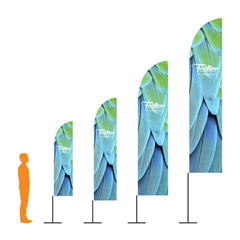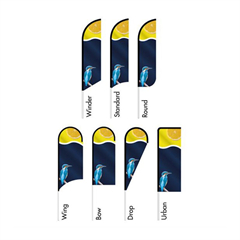Staying updated with current brochure design trends can help you create fresh and engaging materials that capture your audience’s attention. Here are some brochure design trends to consider:
- Minimalistic Design: Minimalism continues to be a popular trend, focusing on clean layouts, ample whitespace, and simple typography. This approach enhances readability and allows key elements to stand out.
- Bold Typography: Big, bold typography draws immediate attention and adds a dynamic visual element to your brochure. Experiment with creative fonts and unique text arrangements.
- Vibrant Colors: Bold and vibrant color palettes can create a sense of energy and excitement. Combine complementary colors or use gradients to add depth to your design.
- Illustrations and Custom Graphics: Hand-drawn illustrations and custom graphics bring a unique and personal touch to your brochure. They can convey a specific mood or style that sets your design apart.
- Geometric Shapes and Patterns: Incorporating geometric shapes and patterns can add visual interest and structure to your design. These elements can be used as backgrounds, dividers, or accent elements.
- Asymmetrical Layouts: Breaking away from traditional symmetrical layouts can create a sense of movement and intrigue. Asymmetrical designs can direct attention and create a modern look.
- Sustainable Design: Embrace eco-friendly design practices by using recycled paper, minimal ink, and sustainable printing methods. Communicate your commitment to the environment through your design choices.
- Emphasis on User Experience: Consider how users will interact with your brochure, whether it’s through digital features like QR codes or augmented reality. Ensure the design enhances the overall user experience.
- Mixed Media: Blend digital and analog elements by combining traditional print design with digital features. For example, use printed QR codes that lead to online content or interactive experiences.
- Typography Art: Turn typography into art by arranging text in creative and visually pleasing ways. This can include forming images or shapes using letters and words.
- Vintage and Retro Styles: Nostalgia can be a powerful tool. Incorporate vintage or retro design elements to evoke feelings of familiarity and warmth.
- Photography and Collage: Use photography and collage techniques to create visually rich and layered designs. This can add depth and complexity to your brochure.
- 3D Effects and Depth: Employing shadows, gradients, and layering can create a 3D effect that gives your brochure a more interactive and immersive feel.
- Typography as the Focus: Design the brochure around typography, making it the central visual element. Play with text size, color, and placement to create a captivating visual rhythm.
- Muted Color Palettes: While bold colors are trendy, muted or pastel color palettes can create an elegant and sophisticated look that appeals to certain audiences.
- Mobile-Friendly Design: With more people accessing content on mobile devices, ensure your brochure design translates well to smaller screens without losing its impact.
- Cultural and Artistic Influences: Draw inspiration from cultural motifs, art movements, or local aesthetics to infuse your design with uniqueness and authenticity.
Remember that trends evolve, so it’s important to adapt them to fit your brand and message. Don’t use a trend just for the sake of it; ensure it aligns with your purpose and resonates with your target audience.


























